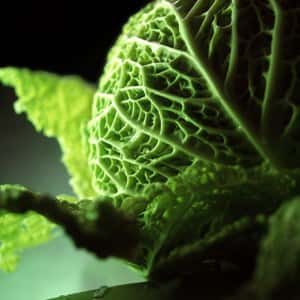
Hemochromatosis is an inherited condition in which iron builds up in the body. It affects more than one million Americans as well as countless other people around the world. When too much iron is stored in the body, it can damage the organs and lead to premature death. The usual way to counteract excess iron and lower ferritin is by removing blood, a procedure called phlebotomy. Some people with hemochromatosis are convinced that diet can also play a role.
How Can You Lower Ferritin?
Q. I was diagnosed with hemochromatosis ten years ago. In the beginning, I had a phlebotomy every three months to remove the excess iron from my blood.
Four years ago, I read that cabbage will “melt” the iron in your blood. I changed my diet to a low red meat intake and foods low in iron. I also started eating cabbage every day, and since then a regular phlebotomy has no longer been necessary.
Once a year I have my ferritin levels checked. Currently my ferritin is at 55. My hemoglobin is high but my doctor says ferritin, which is how your body stores the iron, is what is important.
I eat coleslaw, cabbage soup, sauerkraut, stuffed cabbage and cabbage in other dishes as often as I can. Possibly some people with hemochromatosis won’t be helped by eating cabbage. However, for me this has been life changing.
What Is Hemochromatosis?
A. Hemochromatosis is a genetic disorder that leads to a dangerous buildup of iron in the body. If left untreated, the excess iron can cause a range of chronic conditions, including heart problems, arthritis, diabetes and certain cancers. Symptoms can include painful joints, fatigue and abdominal discomfort.
Hemochromatosis may have provided Neolithic farmers in early Europe with a survival advantage as they switched from hunting and eating big game to a low-iron diet based on grains and dairy products (McCullough et al, Human Biology, Jan. 2015). But like so many genes that offer advantages in one context, the HFE and C282Y genes that cause hemochromatosis can be lethal when diets are rich in iron.
Blood-Letting as the Primary Treatment:
The normal treatment involves removing excess iron through regular phlebotomy (blood letting). Although it would seem logical to give blood regularly as a way of benefiting others as well, the American Red Cross does not accept blood from donors with hereditary hemochromatosis. Doctors may also recommend a medication that chelates iron to remove it from the blood stream. For many patients, regular phlebotomy is critical.
Can Diet Lower Ferritin?
We could find no research supporting a cabbage-heavy diet for managing hemochromatosis. We have heard from a number of individuals, however, that they find this dietary approach helpful. Regular blood testing is crucial regardless of the treatment strategy.
Fermented Foods to Help with High Ferritin:
Q. I’ve had hemochromatosis for more than two years. Before that I had been diagnosed with fructose intolerance.
I began eating more pickled krauts and other probiotic foods to help with my fructose intolerance, and I noticed the time between my phlebotomies were increasing. Yesterday my scheduled phleb was cancelled because my ferritin was mid-range. I haven’t had a bloodletting in five months now.
If cabbage chelates iron, then I’m all in. For the past month or so, I have been making raw cabbage salads or mixing it in with greens almost every day. Usually one serving per day, often more. I think there is something to this.
What Is the Story on Cabbage?
Several years ago we heard from a reader that eating cabbage lowered his ferritin levels. Ferritin carries iron in the bloodstream and is elevated in hemochromatosis. Others have also reported some success with this dietary approach, though it cannot substitute for expert medical care.
The usual dietary recommendations for people with hemochromatosis include avoiding iron supplements or iron-containing vitamin pills; avoiding vitamin C supplements with meals; drinking coffee or tea with meals; taking a calcium supplement at mealtime and eating lots of fiber; avoiding extra sugar, especially blackstrap molasses; limiting red meat; steering clear of raw shellfish; not cooking in cast iron pans; and eating lots of fresh produce, both fruits and vegetables. Cabbage certainly fits into that latter category. The phytic acid that is abundant in many whole grains and vegetables may be helpful in reducing iron overload (Hatcher et al, Future Medicinal Chemistry, Dec. 2009).
Readers Offer Their Stories:
One reader offered this:
“Our family gene pool has had hemochromatosis in it for CENTURIES. Yet we all, except one that we can determine by known history, have lived into our 80s and 90s. Now my age is 79, and my oldest brother is 89. ONE of our siblings died of lung cancer at age 86.
“We lead a diet controlled life and blood-letting when needed, usually 6 or more months apart. Cabbage is a regular part of our diet: coleslaw, boiled cabbage, in salads, and a raw wedge even. By the way, we can trace our known family history into the 1500s and back to 777 A.D.”
Women can also have hemochromatosis. One woman wrote:
“I was diagnosed with hemochromatosis late last year. I juice a serving of cabbage with apple, celery and carrot (whatever there is) every day. I’ve had four venesections to date and my levels have come down from 1556 to 404.”
Another reader was surprised by the diagnosis:
“I am 36 and have been diagnosed with the C282Y mutation. Apparently my liver is still able to break down iron, but only half as efficiently as it should. My ferritin was surprisingly high at 1250. It. It did come down to 897 after 3 blood donations. I go every six weeks.
“Further my father was tested last week. He is 65, and his ferritin is over 6000. My wife is a doctor, and we found that the older doctors around these parts are not really testing people for iron overload.”
Michael from Baltimore, MD, reported:
“I recently was just diagnosed with Hemochromatosis at the age of 45. I have struggled for years with chronic fatigue, depression and other symptoms. At one point years ago my old doctor told me I had PTSD and GAD. Sent me to see a psychiatrist.
“After about three sessions of doing breathing exercises and eye movement therapy, I walked out and then left my old doctor and went to see a friend’s doctor for a second opinion. After some lab work and genetic testing I in fact was positive for one copy of the C282Y and H63D HFE gene. My labs came back with a Ferritin level of 72 and total iron was 246H and saturation % was at 74H. I went for an MRI and my liver and kidneys are fine, which I feel lucky. My struggle is with the diet and how to kick this chronic fatigue. It has got so bad that I struggle to get out of bed.
“I went for my first blood donation at the Red Cross, but I was turned away because I was stationed in Germany from 1990-1992 in the US Army during the Mad Cow disease. This will keep me from ever donating blood in the U.S. I had to see a specialist, get a prescription and then go to a clinic that specializes in these conditions. My anticipation was great because I thought after my first blood donation I would feel wonderful. Well, I am here to tell you I feel terrible. This was two days ago and I feel worse than ever. I feel so fatigued it is not even funny anymore. Any recommendations as to how to beat this chronic fatigue and sluggish feeling I would greatly appreciate it.”
Sasha wrote about her brother:
“My brother was recently diagnosed with compound hemochromatosis CY and HD gene. Over the past few months, he has gone for blood lettings every week, has been eating more healthy, drinking less alcohol, exercising, and has brought his ferritin down from 800 to 50. His liver MRI showed 4% iron overload. Do you think his liver is now iron-free? The cabbage is a great recommendation. Do you have any other recommendations for diet? Thank you!”
Chelating Iron with Foods:
Both black and green tea contain natural iron chelators and may also be a helpful addition to the diet (Mandel et al, Journal of Neural Transmission. Supplementum, 2006). Curcumin, the active ingredient in turmeric, also chelates iron (Badria et al, PLOS One, July 31, 2015). So does rosemary when it is added to food as a spice (Samman et al, American Journal of Clinical Nutrition, March 2001). The flavonoid compound rutin, found in apples, buckwheat, green and black tea, figs and many citrus fruits, was able to lower ferritin levels and alleviate iron overload in rats (Aziza et al, Pakistan Journal of Biological Sciences, Aug. 2014).


